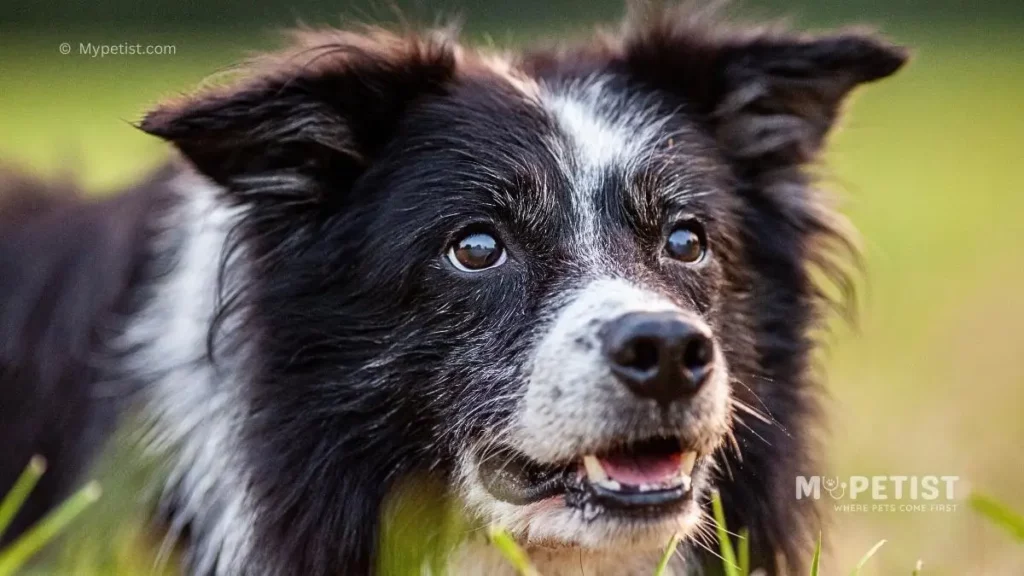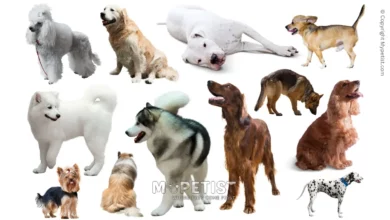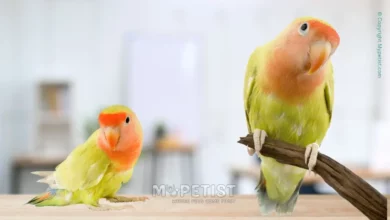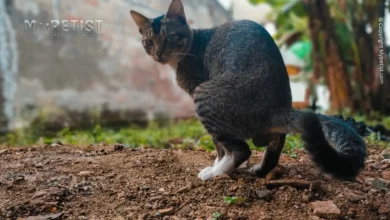Why Does My Dog Stare at Me? Mystery Revealed
Puppy Love or Psycho Stare? Decoding Your Dog's Intense Stares.
Have you ever found yourself on the receiving end of an intense, unblinking gaze from your furry companion and wondered, Why does my dog stare at me? It’s a question that has puzzled dog owners for generations, prompting countless speculations and theories. But fear not, because the mystery behind this seemingly enigmatic behavior is about to be unveiled.
Prepare to delve into the fascinating world of canine communication as we uncover the secrets behind those soulful eyes and decipher what your pooch’s prolonged stares really mean.
Table of Contents
- The Curious Canine Gaze: A Common Pet Owner Mystery
- Understanding Canine Communication
- The Many Meanings of the Stare
- The Evolutionary Perspective
- Factors Influencing Pets’ Staring Behavior
- When Pet Staring Becomes a Concern
- Responding to Your Dog’s Stares
- Strengthening the Human-Canine Bond
- Conclusion
- Q: Why does my dog stare at me?
- Q: Is it normal for my dog to stare at me?
- Q: Why does my dog stare at me without blinking?
- Q: Can staring be a sign of aggression in dogs?
- Q: How can I get my dog to stop staring at me?
- Q: What are some reasons why dogs stare at us?
- Q: Can a dog’s stare be a sign of cognitive dysfunction?
- Q: Should I stare back at my dog when they are staring at me?
- Q: Can dogs stare at other dogs in the same way they stare at humans?
- Q: Why does my dog stare at me when I’m in the kitchen cooking?
The Curious Canine Gaze: A Common Pet Owner Mystery
Many dog owners have experienced the puzzling behavior of their furry friends staring at them for extended periods of time. It can be a bit unsettling and leave us wondering why our dogs engage in this behavior. In this article, we will explore the reasons behind why dogs stare at their owners and what it could potentially mean.
Understanding Canine Communication
Dogs as Social Animals: Non-Verbal Communication
Dogs are highly social animals, relying on both verbal and non-verbal cues to communicate with their owners and other animals. While they can’t speak in words, they have developed various methods to express their emotions and needs. One such method is through their intense gaze, which can convey a range of meanings.
The Many Meanings of the Stare
Affection and Bonding, Seeking Attention, Hunger and Anticipation, Anxiety and Stress, Empathy and Comfort, Playfulness and Excitement

When your dog stares at you, it can be a sign of affection and bonding. Your dog may be trying to establish a connection with you and show their love. They may also be seeking attention and trying to get you to engage with them. If your dog is hungry or anticipating a meal, they may stare at you as a way to communicate their needs.
On the other hand, staring can also indicate anxiety and stress in dogs. They may be feeling uneasy or worried about something. Additionally, dogs can also stare to offer empathy and comfort when their owners are upset or going through a difficult time. Lastly, playful and excited dogs may stare as a way to initiate play or indicate their excitement.
The Evolutionary Perspective
Canine Ancestry and Pack Behavior, The Role of Eye Contact
To understand why dogs stare, we can look at their evolutionary history and pack behavior. Dogs are descended from wolves, which lived in packs and relied on communication to survive.
Eye contact played a crucial role in pack dynamics as it helped establish hierarchy and convey intention. Therefore, it is believed that dogs have retained this behavior from their ancestors, using eye contact to communicate their needs and emotions to humans.
Factors Influencing Pets’ Staring Behavior
Breed and Personality Traits, Age and Developmental Stages, Environmental Triggers
Several factors can influence a dog’s staring behavior. Breed and personality traits play a role, as some breeds are naturally more prone to intense staring than others. Age and developmental stages can also affect staring behavior, with puppies being more likely to engage in exploring their environment through prolonged eye contact.
Environmental triggers, such as new stimuli or changes in routine, can also cause dogs to stare as they try to process and understand their surroundings.
When Pet Staring Becomes a Concern
Excessive Staring, Aggressive Staring, Avoidance and Fear
While staring is often harmless, there are instances when it can become a cause for concern. Excessive staring, where a dog fixates on a person or object for extended periods of time, may indicate a behavioral issue that needs attention.
Aggressive staring, accompanied by growling or showing of teeth, can be a sign of territoriality or aggression. Additionally, staring coupled with avoidance or fear can indicate a dog’s discomfort with a particular situation or person.
Responding to Your Dog’s Stares
Positive Reinforcement, Setting Boundaries, Seeking Professional Help
If you find your dog staring at you, there are several ways you can respond to their behavior. Positive reinforcement, such as praising or rewarding them when they display desired behaviors, can help encourage positive interactions. Setting boundaries and establishing consistent rules can also help your dog understand appropriate behavior.
If the staring behavior persists or becomes problematic, seeking guidance from a professional, such as a dog trainer or veterinarian, can provide valuable insights and solutions.
Strengthening the Human-Canine Bond
Interactive Play and Engagement, Training and Obedience, Creating a Comfortable Environment

Building a strong bond with your dog is essential for a happy and healthy relationship. Interactive play and engagement, such as regular play sessions and mental stimulation activities, can help strengthen your connection. Training and obedience exercises not only provide mental stimulation but also establish a sense of trust and communication. Creating a comfortable environment that meets your dog’s physical and emotional needs is also crucial in fostering a strong bond.
Conclusion
In conclusion, a dog’s stare can convey various meanings and emotions. It can be a sign of affection, a way to seek attention, or an indication of hunger or anxiety. Understanding your dog’s staring behavior can help strengthen the bond between you and your furry friend. However, it is important to be aware of excessive or aggressive staring, as it may require intervention.
By responding to your dog’s stares with positive reinforcement, boundaries, and professional help when necessary, you can ensure a loving and harmonious relationship with your canine companion.
Q: Why does my dog stare at me?
A: There could be several reasons why your dog stares at you. One possibility is that your dog is trying to communicate something to you, such as a need for food, water, or to go outside. Another reason could be that your dog simply wants your attention or is seeking love and affection.
Q: Is it normal for my dog to stare at me?
A: Yes, it is normal for dogs to stare at their owners. Dogs use eye contact as a form of communication and to express their feelings. When your dog stares at you, it can be a way for them to show love and affection, or to request something from you.
Q: Why does my dog stare at me without blinking?
A: Dogs often stare at their owners without blinking because they are intently focused on something. This could be out of curiosity, a desire for attention, or as a sign of affection. It is usually nothing to be concerned about unless it is accompanied by other signs of aggressive behavior.
Q: Can staring be a sign of aggression in dogs?
A: Staring alone is not necessarily a sign of aggression in dogs. However, if your dog’s stare is accompanied by other signs of aggression, such as growling, bared teeth, or a stiff body posture, it is important to consult a professional dog trainer or behaviorist for guidance.
Q: How can I get my dog to stop staring at me?
A: If your dog’s staring becomes excessive or bothersome, you can redirect their attention by giving them a command or engaging them in an activity. For example, you can ask your dog to sit or lie down, or you can give them a toy to play with. Consistent training and positive reinforcement can help teach your dog to break the habit of staring.
Q: What are some reasons why dogs stare at us?
A: There are several reasons why dogs stare at their owners. It could be because they want your attention, are anticipating something, are observing your behavior, or are simply expressing their love and affection. Dogs also use eye contact as a way to communicate and establish a bond with their owners.
Q: Can a dog’s stare be a sign of cognitive dysfunction?
A: Yes, in some cases, a dog’s obsessive or prolonged staring could be a sign of cognitive dysfunction, especially in older dogs. If you notice other abnormal behaviors or changes in your dog’s overall behavior, it is important to consult a veterinary professional for a proper diagnosis and guidance.
Q: Should I stare back at my dog when they are staring at me?
A: Staring back at your dog when they are staring at you can be interpreted as a form of communication. It is often recommended to avoid prolonged eye contact with a dog, especially if they are exhibiting signs of aggression or discomfort. Instead, you can redirect their attention or engage in other positive interactions with them.
Q: Can dogs stare at other dogs in the same way they stare at humans?
A: Yes, dogs can use eye contact as a form of communication with other dogs as well. They may stare at other dogs to establish dominance, to communicate their intentions, or simply to observe the behavior of other dogs. However, it is important to monitor their body language and intervene if necessary to prevent any potential conflicts.
Q: Why does my dog stare at me when I’m in the kitchen cooking?
A: When your dog stares at you while you’re in the kitchen cooking, it is likely because they are hoping to receive some food or treats. Dogs have a strong sense of smell and can detect the enticing aromas coming from the kitchen. Their stare is their way of expressing their desire to share in the deliciousness.





🐾 Unlock the secrets behind your pup’s intense gaze!
😍 Find out why your dog stares at you with love, excitement, or maybe a hint of hunger. 🐶❤️ Don’t miss out on strengthening your bond and understanding those soulful eyes! 📚 Dive into the canine communication world at MyPetist:
https://www.mypetist.com/why-does-my-dog-stare-at-me/
.
#mypetist #petlovers #pets #dogbehavior #caninecommunication #puppylove #dogstare #dogcare #petbloggers